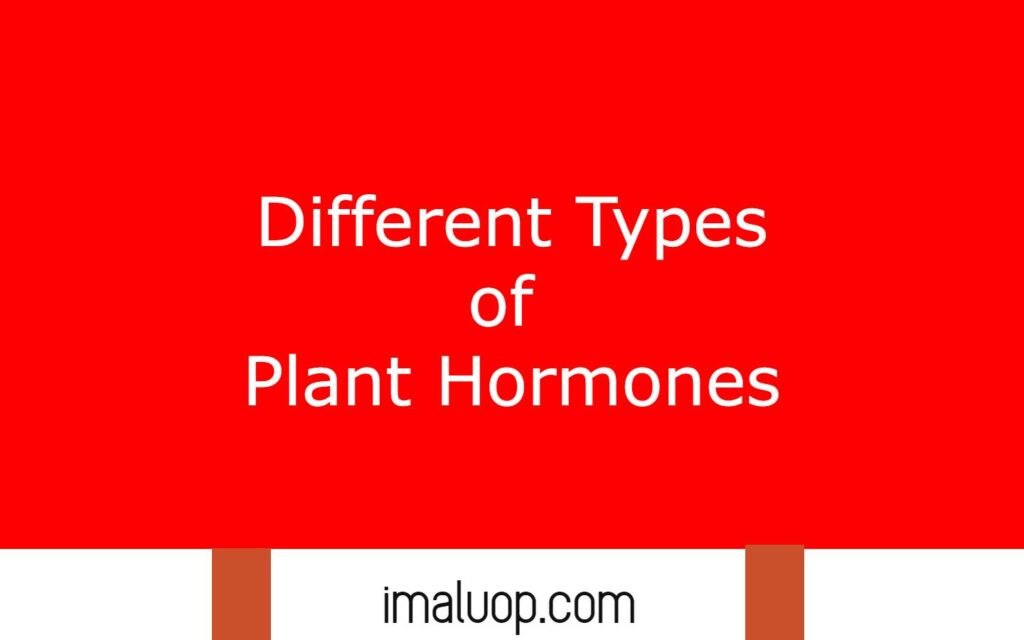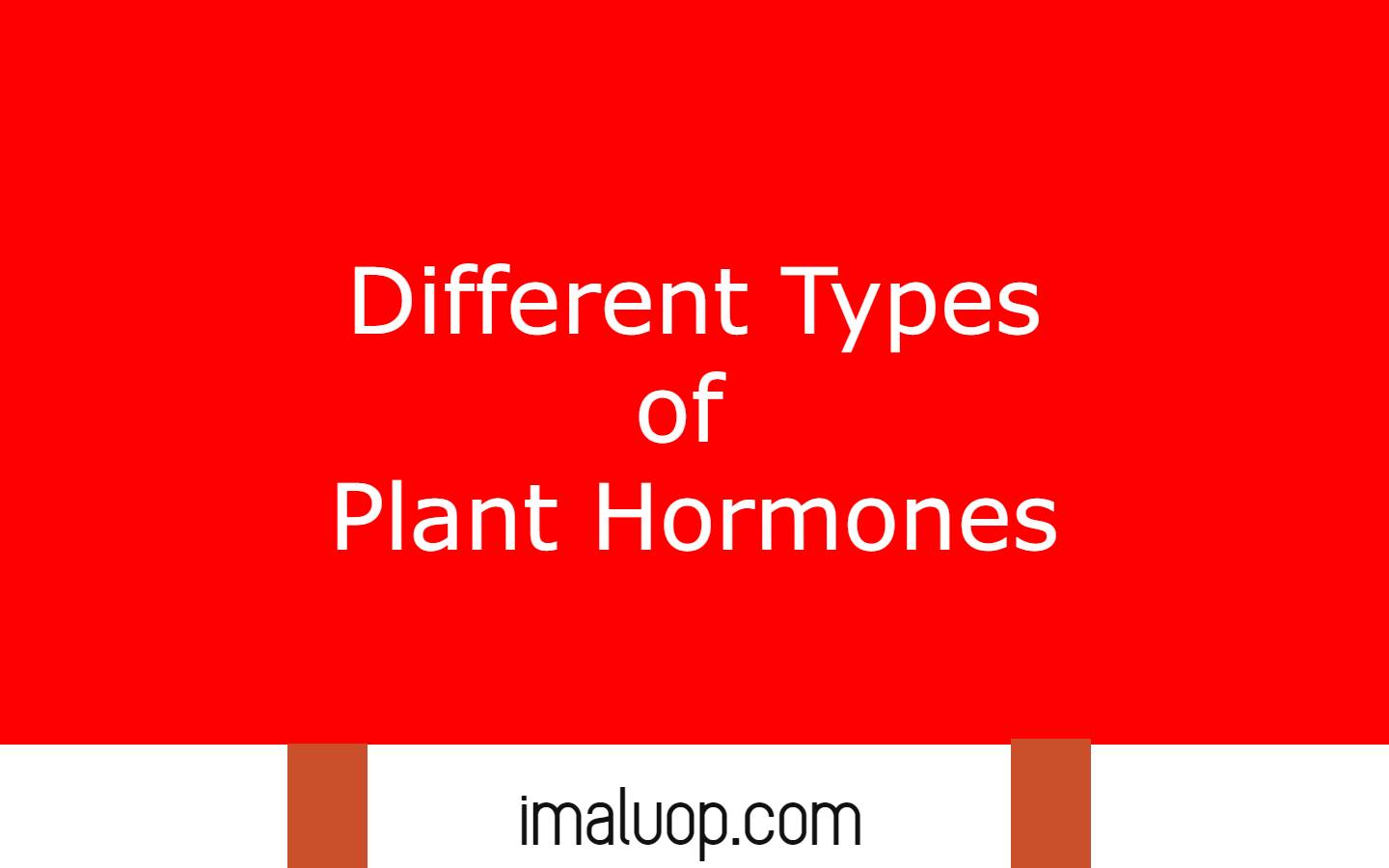Like animals, plants also produce different types of plant hormones which take part in controlling different types of function like growth for specific organs and other physiological processes.
Different plant hormones have specific role in the physiology of plant, some plant hormones responsible for regulating the growth of different plant parts, some plant hormones regulate the growth between the internode in stem, some plant hormones regulate the seed dormancy while some plant hormones regulate the senescence in plant by promoting programmed cell death.
Different types of plant hormones are known now but there are five major types of plant hormones which majorly control all the important physiological processes in plants and we will discuss each type of plant hormones with their chemical nature, structure and function in plant development.
Table of Contents
Different Types of Plant Hormones:
Auxins:
Auxin can cause elongation and enlargement in plant cells, so the auxin hormone is responsible for growth of different plant parts. When we keep a plant in partial light then we observe the bending of the plant stem towards the direction of light and it is due to the activities of auxin, the plant growth in response to gravity is known as geotropism is also responsible for the activities of auxin.
Auxin causes growth in meristematic tissue in plants in the shoot region and auxin concentration occurs more in the shoot region than the concentration in the root region. Auxin promotes growth in different plant parts in different species, for example in fruit plants the auxin is responsible for promoting flower formation and fruit formation.
In the plant in which plants store food in different parts like potatoes store starch in their tuber while carrot plants store starch in their root and auxin promote the starch storage in those plants.
Now it is possible to synthesis auxin in laboratory and the synthetic auxin is used for various purposes and auxin not always promote the plant growth, in some plant auxin can disrupt cell cycle so synthetic auxin can be used in controlling weed growth and can be applied to prevent the growth of unwanted branches in ornamental plants.
Synthetic auxin is used in agriculture for growth of specific plant parts, for example in tissue culture auxin is used for producing new plant from a plant part.
Cytokinins:
Cytokinins are responsible for cell differentiation in plants and can be used for development of different plant parts for different purposes. Cytokinins are used in large scale for tissue culture, cytokinins and auxin combinedly used in different ratios to develop new plants in tissue culture.
Abscisic Acid:
In plant abscisic acid have a great role in preventing water loss and this plant hormone is also responsible for regulating seed dormancy and due to this reason abscisic acid also known as dormin.
Abscisic acid controls the development of the embryo inside the seed and during a high temperature environment the water loss through the stomata increases and then the abscisic acid works on stomata and closes them to prevent water loss.
Ethylene:
Ethylene is a gaseous plant growth regulator which can reach at different plant parts very fast due to these gaseous states. Ethylene generally releases in response to any tissue damage in plants and can spread in damaged tissue at a very fast rate due to its gaseous state and ethylene is also responsible for ripening of fruits so it is also used commercially to ripen the fruit.

Gibberellin:
Gibberellin is responsible for promoting cell division in plants and stimulating plant growth and it also helps to overcome the seed dormancy. In some plants due to genetic defects gibberellin do not produce in sufficient amounts which can cause dwarf plants and we can promote the plant growth in genetically dwarf plants by administration of gibberellin.
Gibberellin is also used to grow fruit size in grapes and gibberellin promotes the amylase enzymes which break down the starch into simple sugars and can be used to germinate dormant seed.
Read More: Characteristics and Classification of Plant
Hi Everyone!!! Welcome to Imaluop. Imaluop always try to learn some new and he want to share to other people. Here we will try to learn various topics on Science, specially on Biological Sciences.
